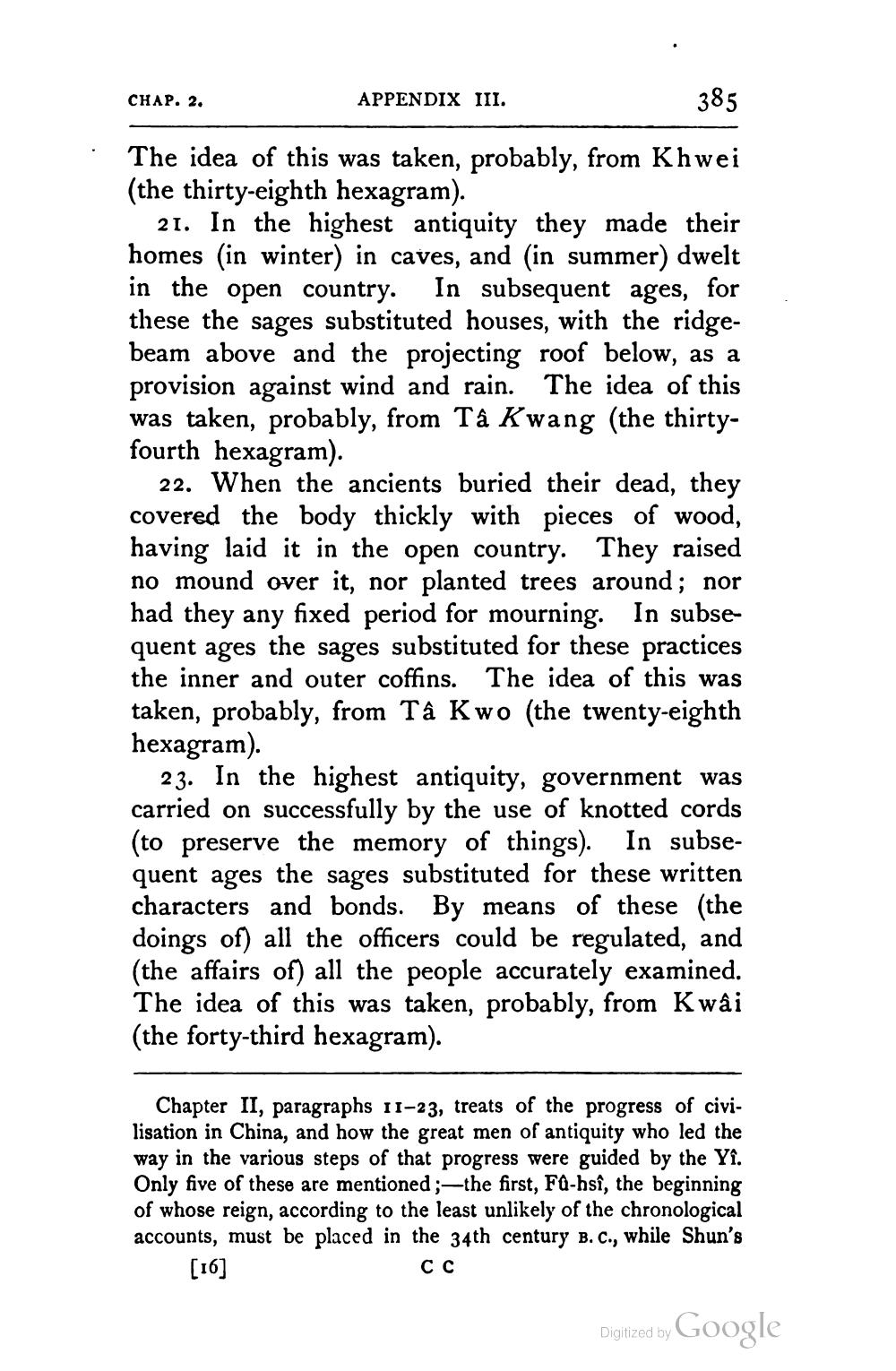________________
CHAP. 2.
APPENDIX III.
385
The idea of this was taken, probably, from Khwei (the thirty-eighth hexagram).
21. In the highest antiquity they made their homes in winter) in caves, and (in summer) dwelt in the open country. In subsequent ages, for these the sages substituted houses, with the ridgebeam above and the projecting roof below, as a provision against wind and rain. The idea of this was taken, probably, from Tá Kwang (the thirtyfourth hexagram).
22. When the ancients buried their dead, they covered the body thickly with pieces of wood, having laid it in the open country. They raised no mound over it, nor planted trees around; nor had they any fixed period for mourning. In subsequent ages the sages substituted for these practices the inner and outer coffins. The idea of this was taken, probably, from Tà Kwo (the twenty-eighth hexagram).
23. In the highest antiquity, government was carried on successfully by the use of knotted cords (to preserve the memory of things). In subsequent ages the sages substituted for these written characters and bonds. By means of these (the doings of all the officers could be regulated, and (the affairs of) all the people accurately examined. The idea of this was taken, probably, from Kwâi (the forty-third hexagram).
Chapter II, paragraphs 11-23, treats of the progress of civilisation in China, and how the great men of antiquity who led the way in the various steps of that progress were guided by the Yi. Only five of these are mentioned ;—the first, FQ-hsî, the beginning of whose reign, according to the least unlikely of the chronological accounts, must be placed in the 34th century B.C., while Shun's [16]
сс
Digitized by Google




